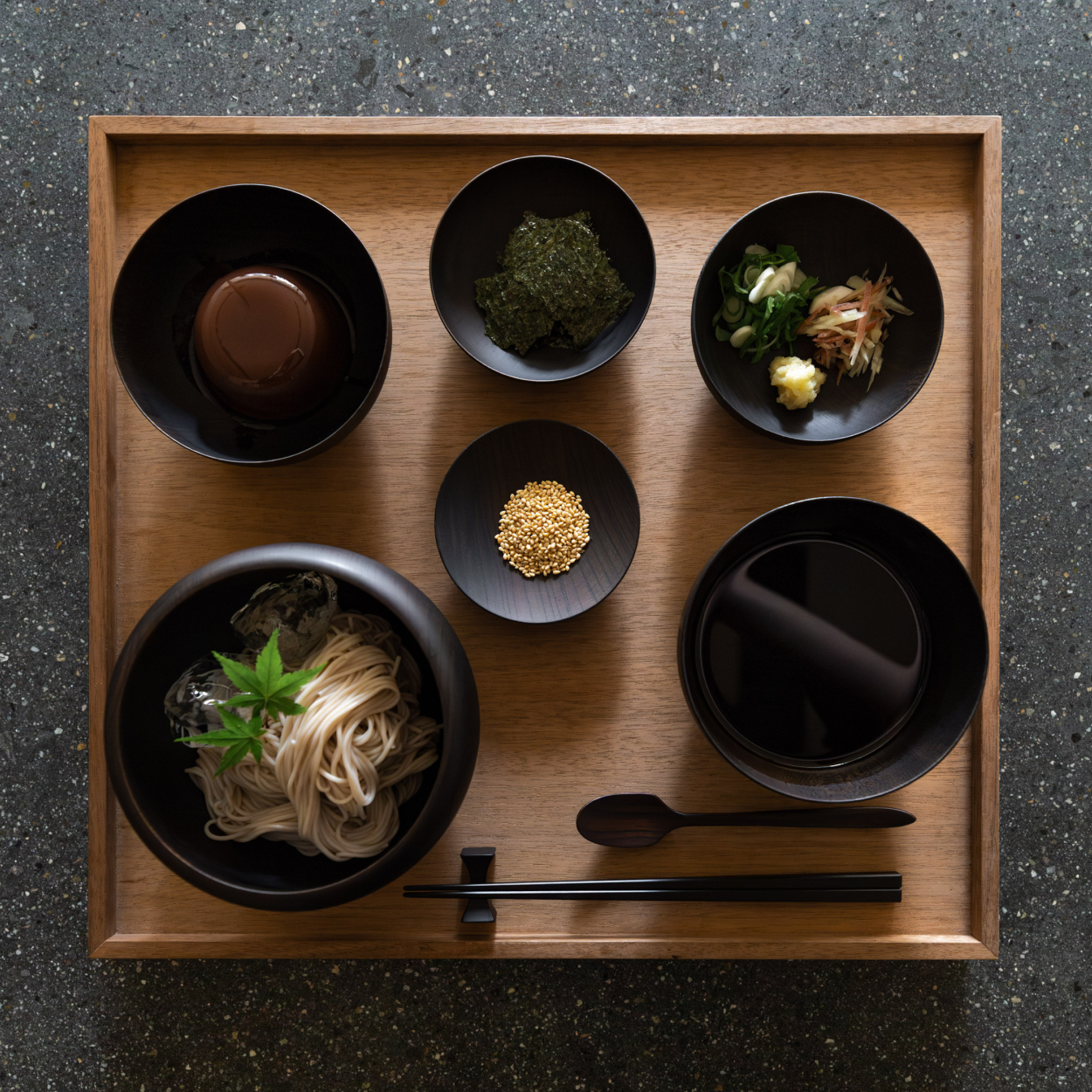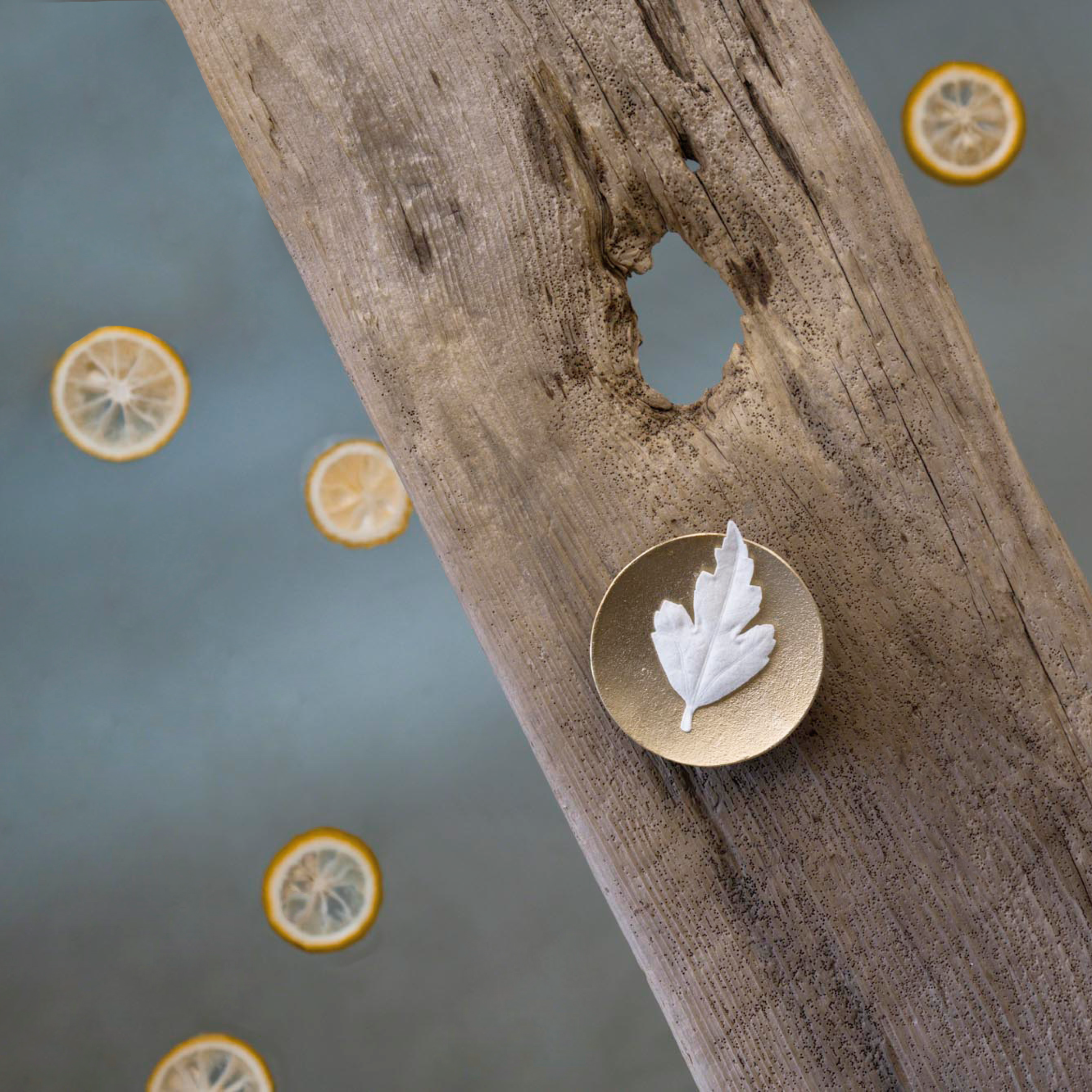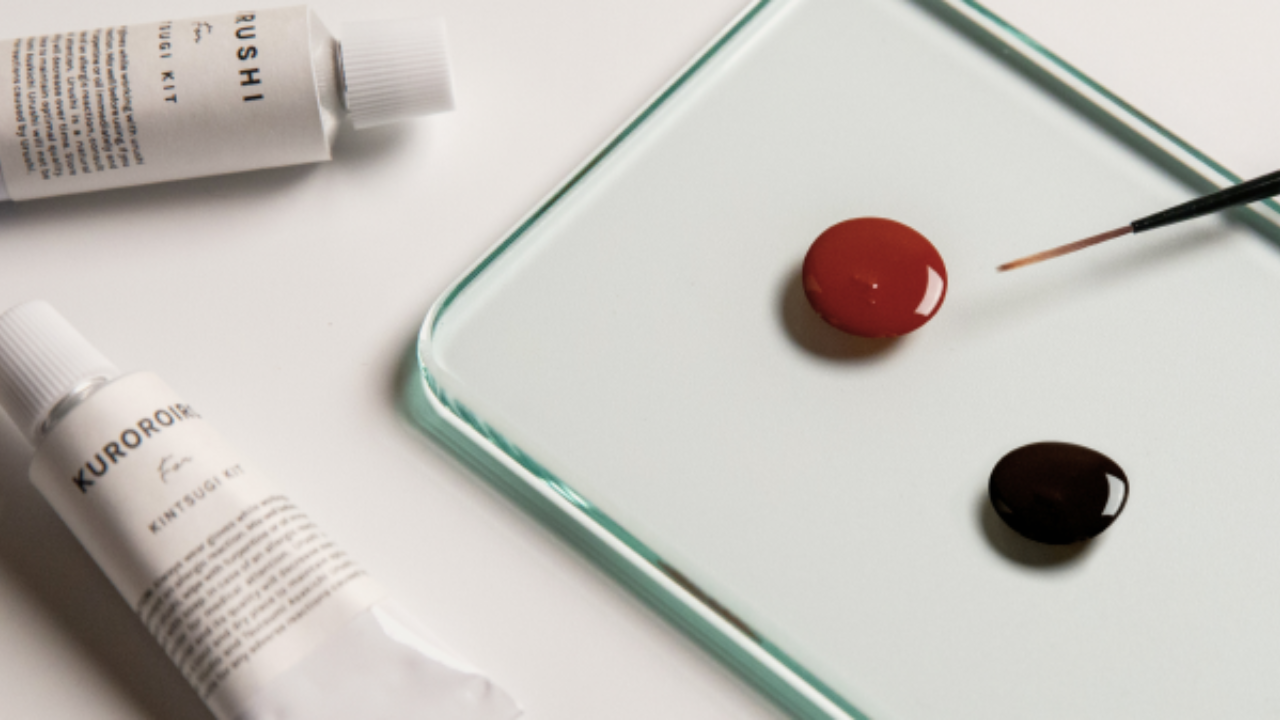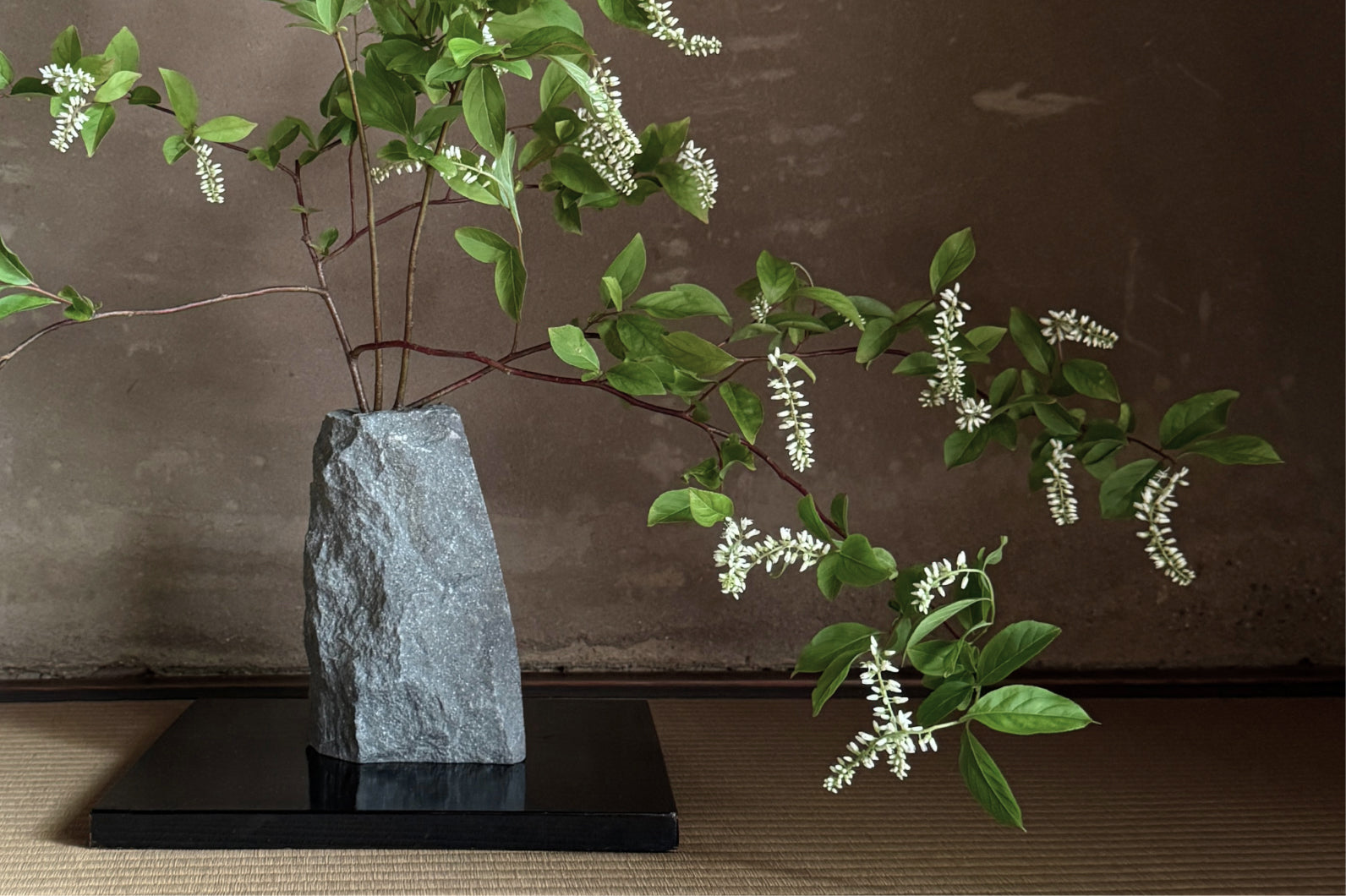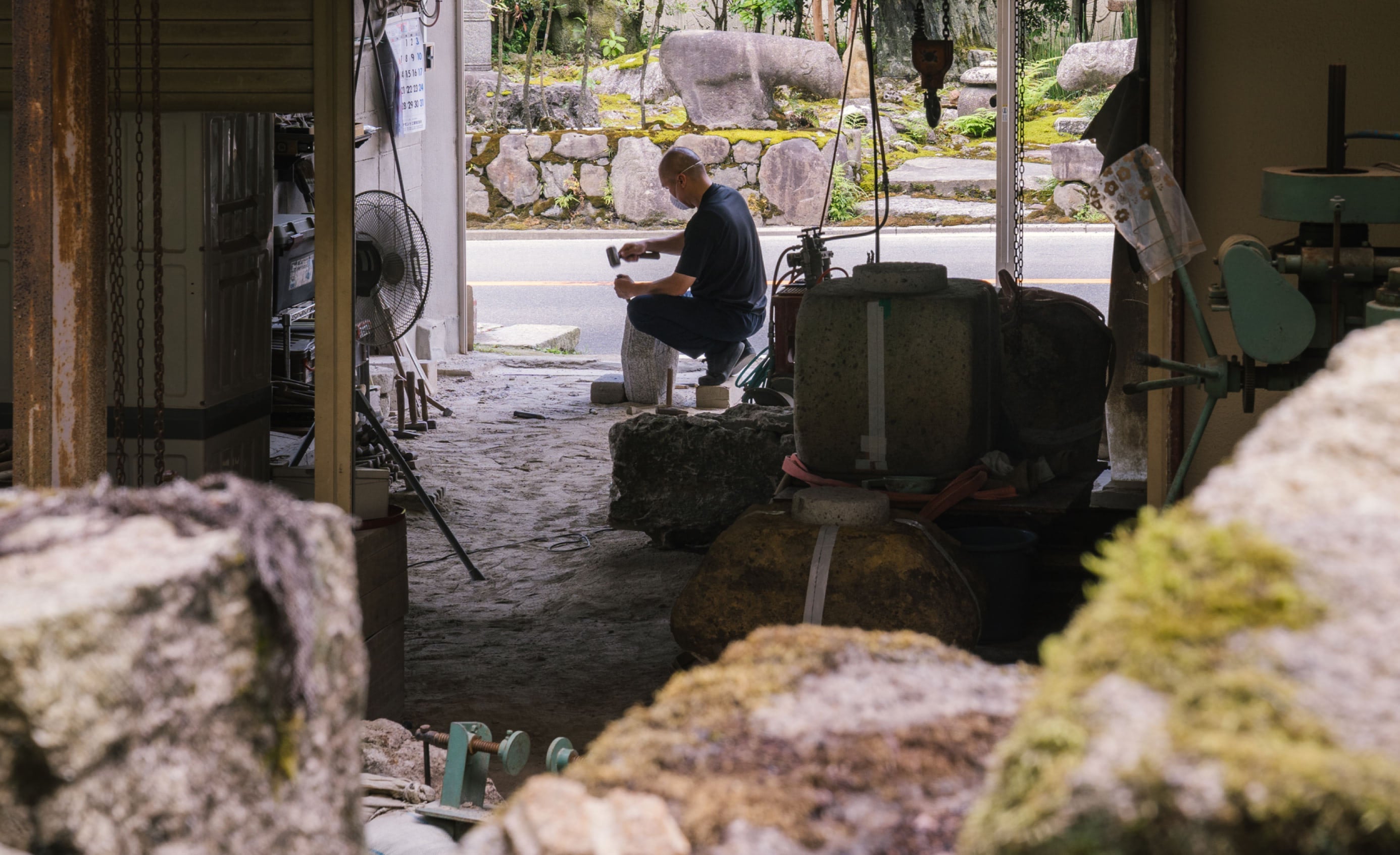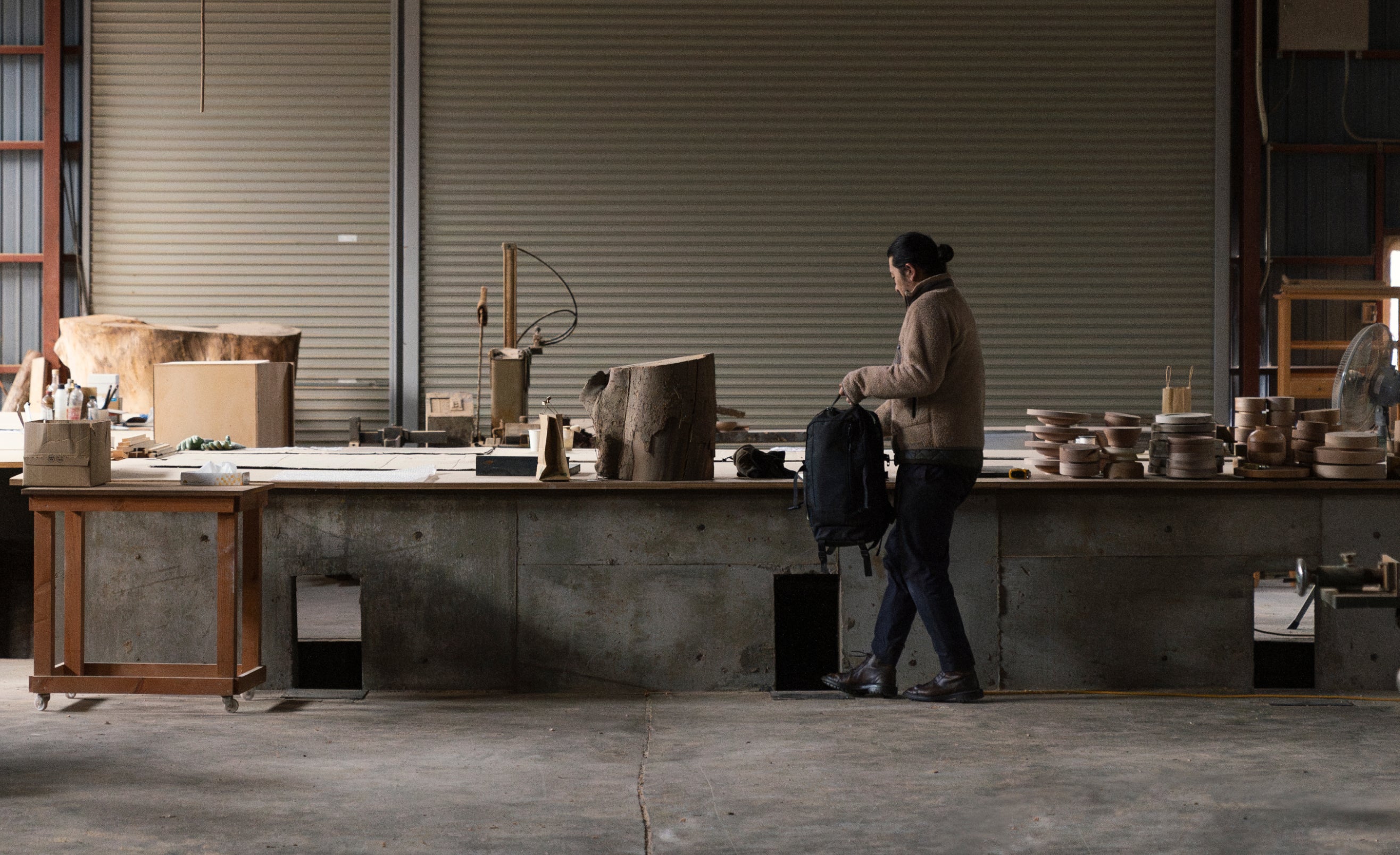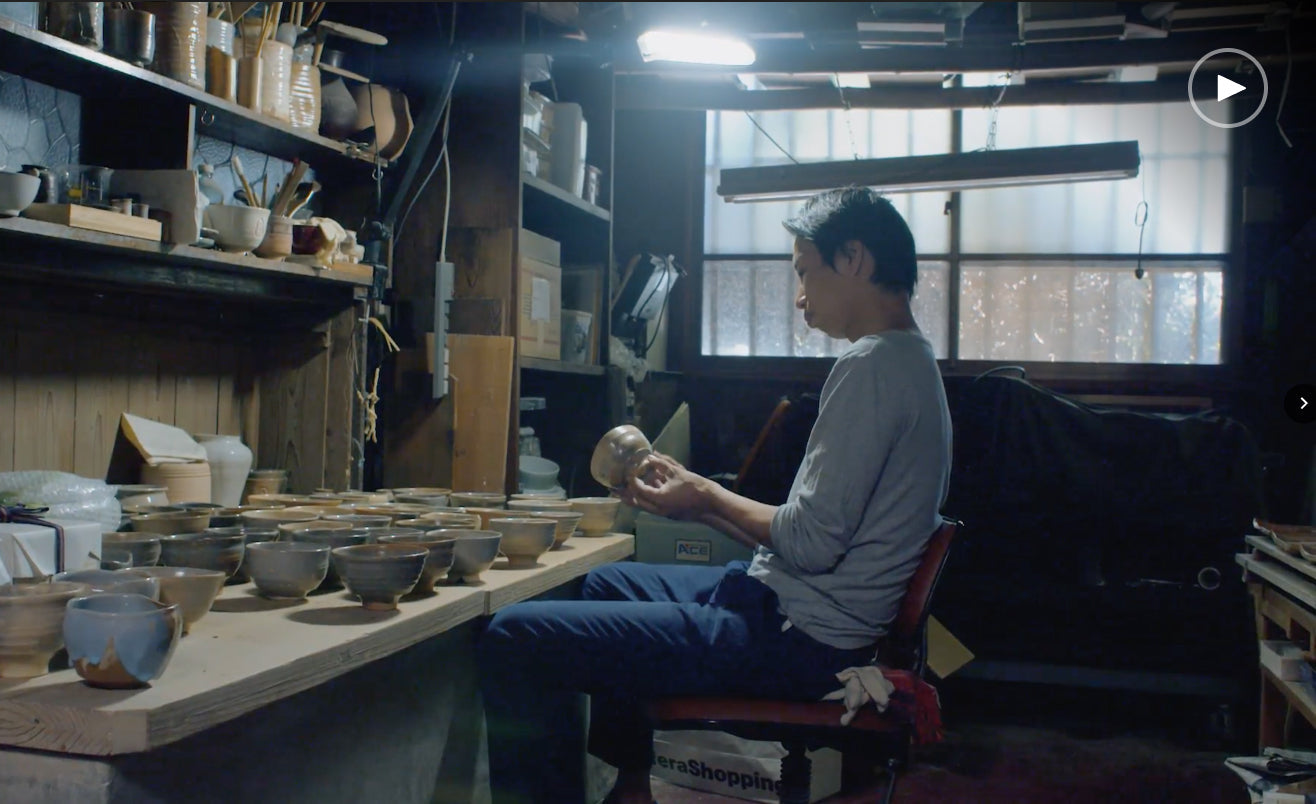Kintsugi may be known for its gold finish, however, gold is only the decorative final touch in the repair process. The functional repair work in kintsugi is owed to urushi tree sap.
In traditional kintsugi work, urushi is refined in two colors: red and black. These two types of urushi are applied in alternating layers during the final stages of the repair process. In addition to gold or silver, repaired pieces can remain red or black . Today, pink, blue, and green urushi are also used to finish kintsugi’d pieces, but red and black remain the only colors that can be produced naturally.
EURUSHI (RED URUSHI)
Red is considered an auspicious and sacred color representing this world, lifeforce, and the sun.
 Red urushi is made by mixing kiurushi (raw urushi) with bengala clay, giving the urushi its red pigment.
Red urushi is made by mixing kiurushi (raw urushi) with bengala clay, giving the urushi its red pigment.
Urushi’s history in Japan reaches back to the Jomon era (13,000BC to 400 BC). And red urushi’s history is nearly just as long. Buddhist practices have regarded red objects as auspicious, and have been seen as being suitable to accompany a monk’s unadorned, everyday life. It is said that these providential associations with the color red inspired the production of high-quality and durable lacquer utensils, which have flourished around Japan since. Tori gates in front of shrines and temples are also urushi lacquered, for its color, as well as for its durability.
In terms of durability, there are no additional benefits to adding bengala to make colored urushi which proves our longstanding affinity and appreciation for the color.
The Repair Process: Red Urushi
After mugi urushi and sabi urushi are used, respectively, to mend the initial breaks, cracks, and chips, the final step of layering red and black urushi can begin. Red urushi is applied first.
 Red and black urushi are applied in alternating layers primarily to serve as visual cues as we lay one color on top of the other. If red is layered over red, for example, it is difficult to tell where we have already applied and where we have not.
Red and black urushi are applied in alternating layers primarily to serve as visual cues as we lay one color on top of the other. If red is layered over red, for example, it is difficult to tell where we have already applied and where we have not.
The purpose of this final step of the repair process is to fill any microscopic holes that may exist in the layers below, to ensure a waterproof and durable finish, as well as a smooth and taut surface before applying gold powder.
When choosing to decorate the repair with gold powder, the last layer of this phase should be red, which helps the gold to pop.

KUROROIRO (BLACK URUSHI)
Black is associated with the other world, night, the infinite, and quiet observation.
 Black urushi is created by mixing kiurushi (raw urushi) with iron hydroxide. The oxidation of which produces the luscious black lacquer seen across Japanese tableware, including (serving trays), bowls, and utensils.
Black urushi is created by mixing kiurushi (raw urushi) with iron hydroxide. The oxidation of which produces the luscious black lacquer seen across Japanese tableware, including (serving trays), bowls, and utensils.
The oxidation process normally takes between 1 -3 days, resulting in the glossy black color that carries with it a depth that can only be achieved through the natively translucent kuroiro.
The Repair Process: Black Urushi
Black urushi follows its red counterpart in the layering process. After the layer of red urushi is applied, cured, and sanded, a layer of black urushi is painted on top of the red.
Because black urushi is more translucent than red urushi, it is easy to over-apply in the layering process, and so it must be approached with teinei, or purposeful intention.
Over-applying either red or black urushi can cause the urushi to dribble before hardening, or to shrivel, a process wherein the outer layer of the urushi hardens and the inner layer remains wet.
Over-applying can affect the final stages of the finishing as well; if the urushi is too heavy, the metallic gold and silver powder will sink when applied.
 The kintsugi process is non-linear, and it is difficult to anticipate how many coats of red and black urushi will need to be applied. As a general guideline, a minimum of 3 to 4 layers is advisable, before the final coat. Just like its red counterpart, black urushi can also be used to finish kintsugi pieces, in place of gold or silver, resulting in a durable and stunning surface.
The kintsugi process is non-linear, and it is difficult to anticipate how many coats of red and black urushi will need to be applied. As a general guideline, a minimum of 3 to 4 layers is advisable, before the final coat. Just like its red counterpart, black urushi can also be used to finish kintsugi pieces, in place of gold or silver, resulting in a durable and stunning surface.
When decorating the repair with silver, the final layer of this last phase will be black urushi which supports the silver sheen. You can read more about the final finishings here.
 With the passage of hands and time, gold or silver on a kintsugi’d piece may gradually reveal the red or black urushi beneath, continuing the ever-changing keshiki, or landscape, of the piece. This natural evolution is one of the great joys of kintsugi.
With the passage of hands and time, gold or silver on a kintsugi’d piece may gradually reveal the red or black urushi beneath, continuing the ever-changing keshiki, or landscape, of the piece. This natural evolution is one of the great joys of kintsugi.
